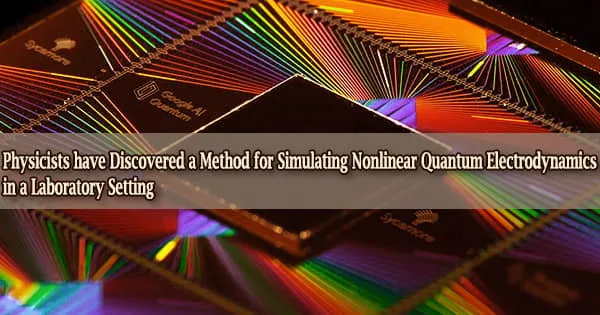In terms of manipulating the electronic states of atomically thin material tungsten disulfide (WS2), ultrashort pulses of light have been shown to be indistinguishable from continuous illumination.
A new study conducted by Swinburne University has demonstrated that ultrashort light pulses may be used to drive transitions to different phases of matter, paving the way for future Floquet-based, low-energy devices.
There’s a lot of interest in employing ultra-short light pulses to produce and control exotic new phases of matter by transiently changing the band structure of a monolayer semiconductor.
The Floquet-Bloch states that result are intriguing both in terms of pure research and in terms of a proposed new class of transistor based on Floquet topological insulators (FTIs).
The ultra-short pulses of light required for detecting the generation of Floquet states were proven to be equally effective as continuous illumination in triggering the state, an important subject that has been largely disregarded until now.
A continuous wave or ultra short-pulses: The Problem With Time
The Floquet physics model, which has been used to predict how an insulator might be changed into an FTI, is based on a purely sinusoidal field, which is defined as a continuous, monochromatic (single wavelength) illumination with no beginning or end.
Ultrashort pulses are about as far as you can possibly get from a monochromatic wave. However, we’ve now shown that even with pulses shorter than 15 optical cycles (34 femtoseconds, or 34 millionths of a billionth of a second), that just doesn’t matter.
Dr. Stuart Earl
Only ultrashort pulses with enough peak intensities to have a measurable effect can be used to investigate this phase shift. And therein lies the problem.
Even the cleanest light source introduces a large variety of additional frequencies to the light’s spectrum when it is turned on or off; the more rapid the switching, the wider the spectrum. As a result, ultrashort pulses like the ones utilized here do not conform to the Floquet physics principles.
“Ultrashort pulses are about as far as you can possibly get from a monochromatic wave,” says Dr. Stuart Earl at Swinburne University of Technology (Australia).
“However, we’ve now shown that even with pulses shorter than 15 optical cycles (34 femtoseconds, or 34 millionths of a billionth of a second), that just doesn’t matter.”
Pump-Probe Spectroscopy of Atomic Monolayer Elicits an Instantaneous Response
Dr. Earl and colleagues from the Australian National University and the ARC Centre for Future Low-Energy Electronics Technologies (FLEET) exposed an atomic monolayer of tungsten-disulfide (WS2) to light pulses of varying lengths but the same total energy, causing the peak intensity to change in a controlled manner.
WS2 is a transition metal dichalcogenide (TMD), a type of material being researched for future “beyond CMOS” devices. Pump-probe spectroscopy was utilized to detect a transient shift in the energy of the WS2 An exciton due to the optical Stark effect (the simplest realization of Floquet physics).
The signal they recorded, which lasted only as long as the pulse, was owing to interactions between equilibrium and photon-dressed virtual states within the sample, thanks to their employment of a sub-bandgap pump pulse.
“It might sound odd that we can harness virtual states to manipulate a real transition,” says Dr. Earl. “But because we used a sub-bandgap pump pulse, no real states were populated.”
“The WS2 responded instantaneously, but more significantly, its response depended linearly on the instantaneous intensity of the pulse, just as if we’d turned on a monochromatic field infinitely slowly, that is, adiabatically,” explains Professor Jeff Davis, also at Swinburne University of Technology. “This was an exciting finding for our team. Despite the pulses being extremely short, the states of the system remained coherent.”
An adiabatic perturbation is one that is introduced very slowly, allowing the system’s states to adjust, which is critical for FTIs.
Although ultrashort pulses should not be consistent with this condition, this finding shows that they are for these atomic monolayers. This allows the researchers to ascribe any non-adiabatic behavior to the sample rather than their experiment.
The FLEET researchers may now investigate Floquet-Bloch states in these materials using an above-bandgap pulse, which should potentially move the material into the unusual phase known as a Floquet topological insulator.
Researchers might be able to combine these materials into a new generation of low-energy, high-bandwidth, and potentially ultrafast transistors once they understand how this process works.
FLEET’s Research theme 3 focuses on systems that display dissipationless transport when driven out of equilibrium, with the goal of developing new, ultra-low energy electronics to address the escalating, unsustainable energy consumed by computation (already 8% of global electricity, and doubling every decade).
















